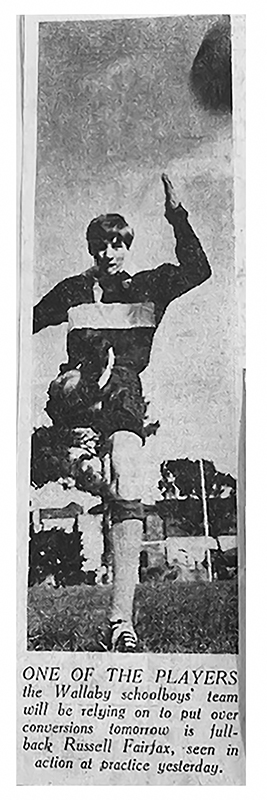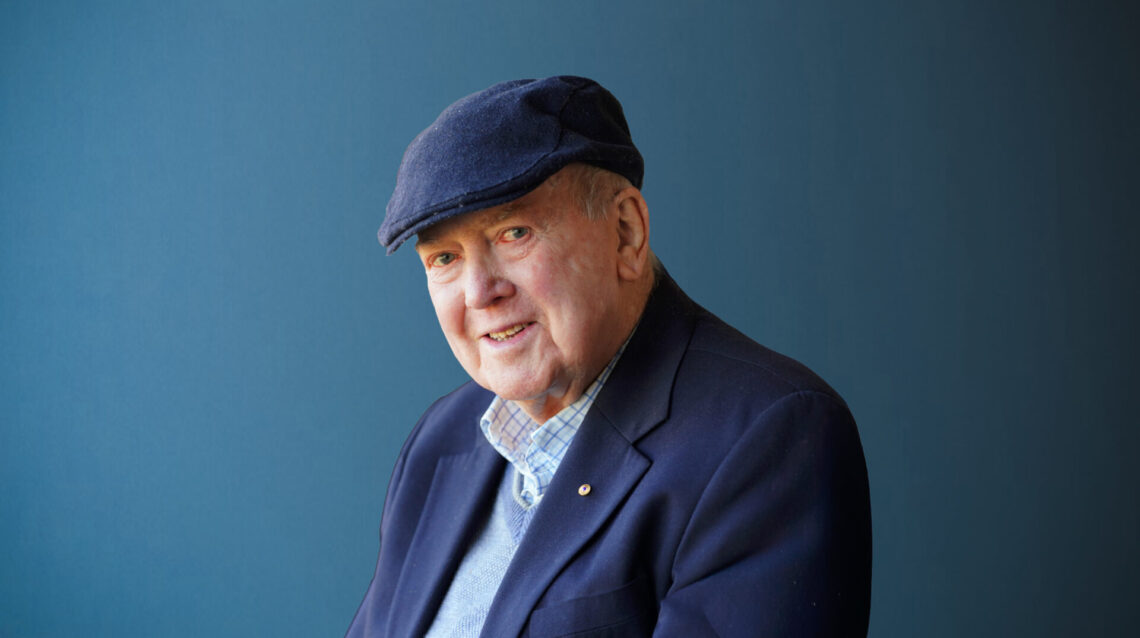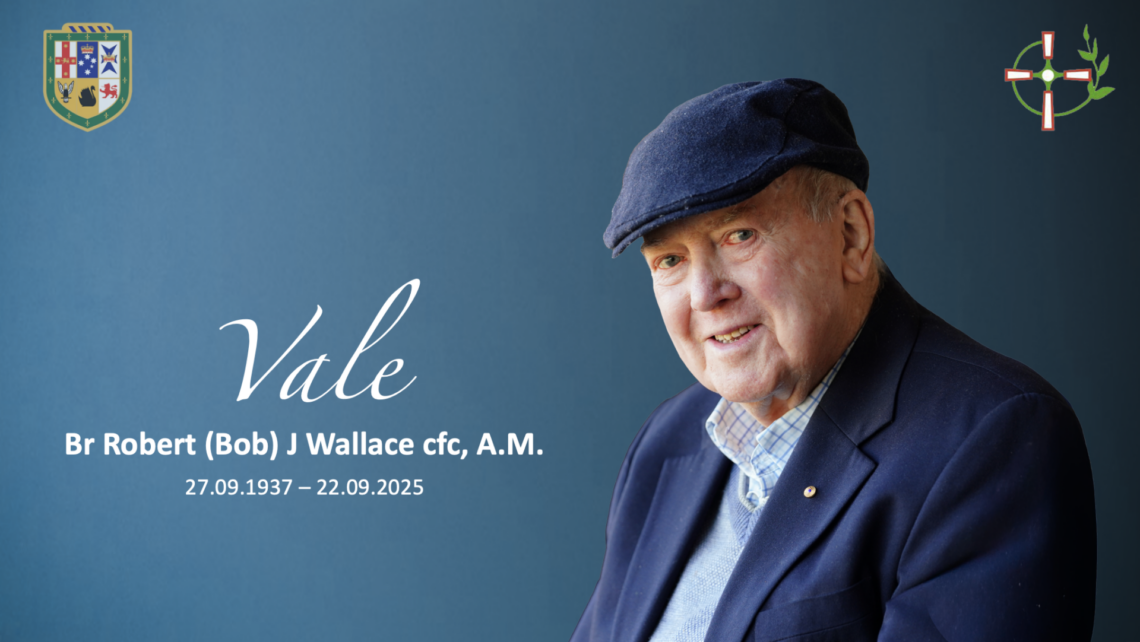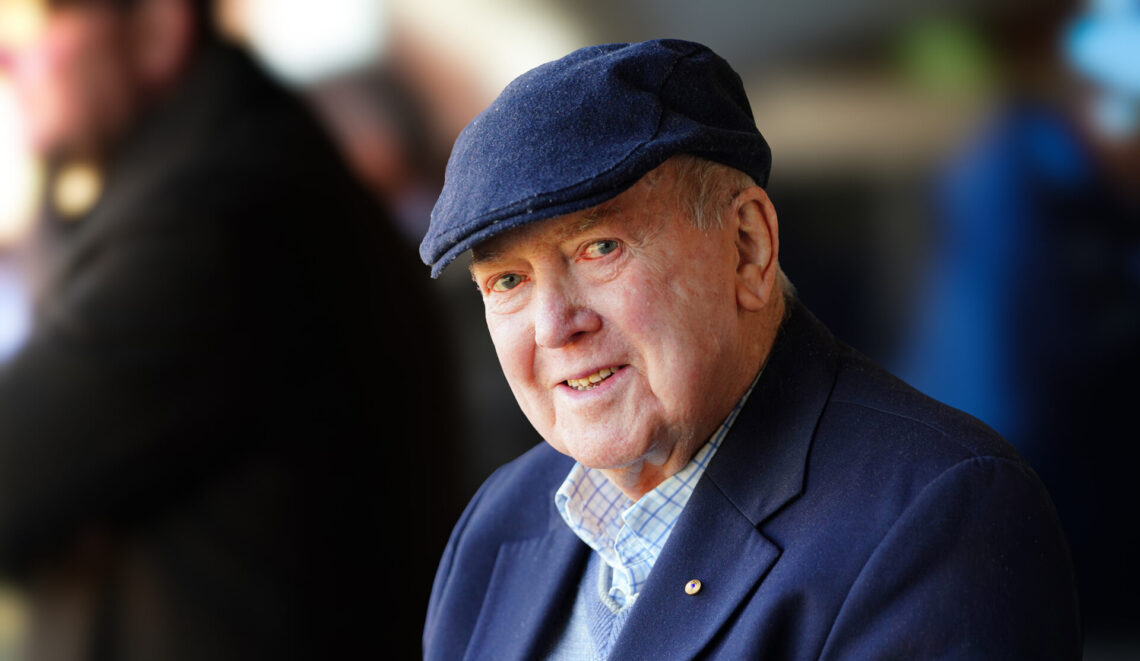The first ever Australian Schoolboys Team and the first Australian Schoolboys Tour (Part 1)
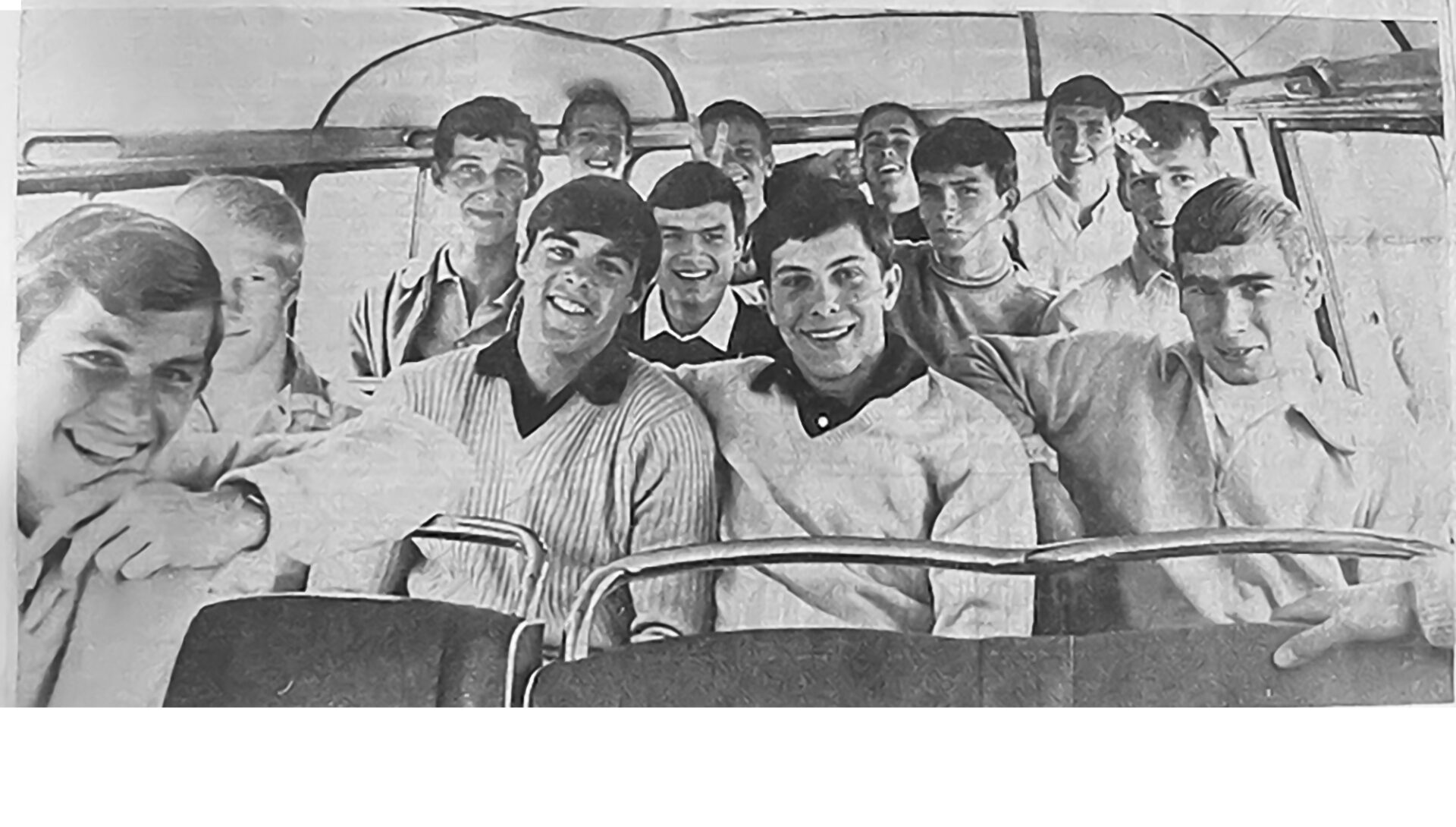
1969 Australian Schoolboy Tour to South Africa: the first ever Australian Schoolboys team and the first ever Australian Schoolboys tour
By Jim Lucey
HISTORY OF THE ASRU: #1: 1969 TOUR OF SOUTH AFRICA (Part 1)
The idea of an Australian Schoolboys team touring South Africa came about by a chance meeting in 1968 between Dr Danie Craven, the legendary Springbok player, coach and administrator and Mr Arthur Henry, President of The Australian Rugby Union.
They were both attending an International Rugby Board (IRB) board meeting in London (today World Rugby). To make the best use of the time and commitment to travel around the world for the board meeting, the IRB often held side meetings and workshops on the days following the board meeting. On this occasion, there was a presentation dealing with the formation of School Rugby Unions and the advantages that would flow to countries with these in place.
Arthur Henry saw value in this idea of forming a School Rugby Union in Australia and, on his return, brought the matter to the attention of the controlling body at the next Council meeting.
Dr Craven also saw advantages coming to South African Rugby if he could convince the Board of the soundness of the idea. He suggested inviting an Australian Schoolboy team to the Republic as a starting point. He told them he had made a tentative invitation to Arthur Henry when in London and had received a positive response.
Hence, we have the embryo for the creation of the Australian Schools Rugby Union and the first ever Australian Schoolboys tour.
In the 1960s, Australian Rugby had very strong and solid relationships with its South African counterpart. The 1963 Wallaby Tour had been both popular and successful, with both Unions looking at ways in which this contact could be expanded.
A number of very strong personal relationships and respect also existed between a number of prominent rugby persons from both countries.
Understandably then, the invitation received the approval of the South African Rugby Union (SARU) and Dr Craven was told to go ahead with discussions with Arthur Henry.
This invitation now became official, and Mr Henry presented it at the next Council Meeting. It initially received only lukewarm support despite the appealing fact that Dr Craven had convinced the South African Rugby Board to underwrite it to the extent of $AU50,000. Nevertheless, Henry was given permission to investigate whether any interest existed at the school level.

NEWSPAPER CAPTION: The Australian schoolboy rugby team’s victory over Eastern Province at the Boet Erasmas Stadium yesterday afternoon was a personal triumph for the tall centre Malcolm Jack. Captaining the side in the absence of the regular skipper, Peter Robinson, who broke his collarbone last weekend, Jack scored 17 of his team’s points in their 29-25 win. He scored two tries and kicked four conversions and a penalty goal. He is diving over for his second try. The junior Wallabies, who are on a short tour of South Africa, are unbeaten, having defeated Northern Transvaal, Western Province and now E.P. Their next match is against Border at East London on Saturday (The report on yesterday’s match appears on page 32).
At that time, New South Wales had three major established associations of rugby playing schools.
Historically, there were two major competitions: Greater Public Schools (GPS) and The Associated Schools (CAS). Both these competitions were self-contained, and except for pre-season trial matches on a school-to-school basis and an annual match between representative teams from each body, no organisation planned or coordinated events. There were no plans or thoughts of touring to an overseas country except on an individual school basis. The concept of a state or national team also did not exist.
Very significantly, by the late 1960s, there was also a surge in rugby playing in the State High Schools, with a solid nucleus of committed schools driven by a number of dedicated teachers. This involvement evolved into a well-organized Combined High Schools Association (CHS). This group was more wedded to the concept of touring overseas and had already sent a team to New Zealand, which had proved to be very successful.
Arthur Henry invited a small group of teachers with whom he had connections from the Sydney GPS, CAS and CHS schools to a meeting to discuss the possibility of selecting a combined team that might tour South Africa.
Several people involved in this group were to play major roles at later dates with the Australian Rugby Football Schools’ Union. They were Mr Bill Toft from CHS, Brother Gerald Burns from St. Joseph’s College, Hunters Hill, and Martin Pitt from Cranbrook School.
Toft was a passionate supporter at both club and school levels and had coached the CHS team on its recent successful tour to New Zealand. Brother Burns was an extremely successful and respected coach from St. Joseph’s College and was also the GPS Rugby Convener at that time. Pitt, from the Cranbrook School, also had a long and distinguished experience as a rugby coach.
Arthur explained to the group that Dr Danie Craven, with the South African Rugby Union’s approval, had issued an invitation for an Australian Schoolboys Team to tour the Republic later that year. Further, he added, their Union would fund all travel costs and all expenses incurred while in South Africa.
He informed them that one disappointing aspect was that it would need to be an Under 17 Team and not an Open Age Group, as was the established competition in Australian schools.
The representatives were asked to take it back to their various Associations to see if there would be support for such a tour.
While the move to exclude South Africa from international Rugby over its Apartheid policies was only in its early days, when news of this invitation became public, there was some criticism in some quarters, both in the schools and in the Australian media, about the idea of a schoolboys team touring that country.
Some schools indicated that they would not be involved whatsoever. Still, enough schools offered their support, so the delegates informed Arthur Henry they would support the tour. The various Senior State Unions were now informed and permission to tour was sought from the Federal Government through the Department of Sport.
While all activity up to this point had involved only NSW personnel, the Federal Government indicated that as the invitation had been issued for an Australian Schoolboy team, the Government said they could not approve such a tour if the team was solely made up of boys from New South Wales schools.
As no actual body existed at that time to which the organising and planning for such a tour could be directed, the Australian Rugby Union took initial control and co-opted the assistance of a group of dedicated school and club people. Bill Toft and Gerry Burns took a leading position in this area.
The tour dates were announced as being from Sunday, August 17, until Monday, September 8, so it was urgent that some form of selection procedure be put in place as soon as possible. Each of the three major School Associations in NSW was invited to nominate two candidates for the positions of Manager and Assistant to the Manager [Coach] and submit them to the Secretary of the Australian Rugby Union. The ARU appointed Br Gerry Burns as Tour Manager and Bill Toft as Coach.
It was left to them, with assistance from the planning group, to organise trials and touring details. It was a difficult task as it was imperative that no interference would take place with the official school competitions running at that time.
To ensure compliance with the Government’s instruction that the team had to be ‘wider’ than just NSW boys, invitations were extended to the Queensland Rugby Union to nominate four boys [2 Backs and 2 Forwards] and to the Southern States and Western Australia Unions for nominations for a selection trial set down for early in July.
No nominations had been forthcoming from the Southern Unions so a panel representing the three associations picked the two teams from the list of names of those nominated from the participating New South Wales Schools. The four lads who had been selected from Queensland also joined.
The team selection panel, chaired by Arthur Henry, consisted of two nominees from each Association and nominees from the Australian Rugby Union. John Freedman, Alan Roper, Bill McLachlan, and Norm Tasker were invited to offer advice based on their experiences touring South Africa with the Wallaby teams in the past.
They selected a group of 25 players, which included the two lads from the four nominated from Queensland, thus satisfying a minimum requirement, the authority to call it an Australian Team.
It is worth noting that five of the boys, including the Team Captain, all came from Epping Boys High School, which had an exceptional First XV that year. [See team list below]
Even though the team’s composition was questioned in Queensland and caused some degree of angst, in hindsight it should be understood that things were done in haste and timelines were very fine. The invitation had come about personally by Dannie Craven to people from New South Wales and the only organisational structures at the time existed in Sydney.
An intriguing note about the selection process was that each boy was then required to participate in an interview with a senior rugby official to ensure that they were of suitable character to represent their country.
The team members then met with the Management Group. They were given details of the tour, the itinerary and other relevant information, including a fitness program they were expected to follow. It was stressed to each boy that they must uphold any commitment to their schools in the intervening time before departure.
When the tour was first discussed, it was intended that the lads, during the three weeks they were in South Africa, would link up with the Wallabies, who were touring the Republic, and play as curtain raisers to their senior countrymen. However, the South African Rugby Union vetoed this and decided that the Australian Schoolboy Team would tour in their own right and be the main game each time they played.
The boys would arrive on the evening of Sunday, 17 August, and play 7 games in the intervening three weeks before departing for home on Monday, 8 September. The boys would be billeted throughout the tour, and internal travel would be by air, with one exception.
The boys’ travelling gear was a green blazer with a pocket showing a flying wallaby, a white shirt, grey slacks, black lace-up shoes, and a wallaby tie, courtesy of the Australian Rugby Union.
Through personal contacts, it was also arranged for the boys to receive a green and gold pullover courtesy of David Jones Pty, Ltd, and an anonymous donor provided funds for a green tracksuit. Playing gear was a gold jersey, again with a flying wallaby crest, black shorts, green and gold socks and their own boots.
Even though the tour had been fully funded, courtesy of South African Rugby, each boy was required to pay $17.00 which went towards the costs of the blazer and grey slacks. The boys were told a passport was required and that they should bring pocket money, a minimum $30 and no more than $50 as all costs were covered.
The boys reassembled in Sydney on Wednesday 13, August 13, and trained that afternoon at Hunters Hill High School, where further details were provided about the tour and what to expect both weather-wise and playing style in the country.
The next day was team photo, training and that evening, an official send-off by the Australian Rugby Union at the Rugby Club in Crane Place.
On Friday, August 15, a strenuous training session took place, followed by a much lighter one on Saturday morning. Despite the short time frame, everything had run smoothly. The Australian Rugby Union had taken responsibility for communication with their South African counterparts. The school personnel in Sydney had taken on tasks with enthusiasm. Gerry Burns and Bill Toft had done the almost impossible. They had communicated with the boys and their families about the tour details and what to expect in their Tour to the Republic.
The training and fitness programs had been severe but would prove beneficial in the long run. They hoped everything was ready. “Go home now with your billeting family, and we will see you at Mascot ready to go on the adventure of your schoolboy life,” the boys were told.
The matches
QF 463, destination South Africa, departed Sydney on that Sunday morning, 17 August, before an enthusiastic group of parents and families with an even more enthusiastic group of young men and two wary and weary management members, Gerry Burns and Bill Toft, heading for a rugby adventure.
After the long flight, the team landed in Johannesburg before transferring to Pretoria for the first game, which was set for Wednesday, August 20, at the famous Loftus Versfeld Oval, where they were to play Transvaal Schools.
It was a bit of an unknown adventure, for both the management and the boys. They had heard the locals talk of the “big men”, and this was playing in their minds as they ran onto the hard yellow surface of the stadium before a noisy crowd of 10,000 people.
The first half was played at a furious pace, and it was evident that the Australian boys were finding it hard to adjust to the oxygen-thin air in the high altitude. Northern Transvaal had the powerful forward pack that they had been warned about, and the home team took the lead early in the game with a penalty kick.
The Australian boys struck back soon after with a fine try by centre David Giles in the corner to level the score at 3 all. This was followed soon after by a powerful run down the blind side for another good try by Brian Hayward. Neither had been converted, and this made the half-time score 6-3 in Australia’s favour.
Northern Transvaal struck back immediately in the second half. A long kick took play deep into the Australian half, and good hands saw the locals score in the corner. This was converted to give them the lead 8-6. Despite their exhaustion, the boys now rallied. A good line-out win and a fine centre kick saw the ball gathered with a second try to David Giles near the uprights. Malcom Jack converted this and the lead went back to Australia 11-8. Time was almost up, but the Northern Transvaal team were awarded a fairly easy penalty, which they failed to kick, and so a completely exhausted Australian team had won their first game 11-8.
Their efforts certainly made an impression on the locals with the press labelling them the “Wallabijes “or “Little Wallabies” and they were praised for free flowing style of attacking Rugby.
Elated and exhausted they now moved on to Capetown to the welcome and familiar smell of the sea after the dryness in Pretoria.
The publicity from the game had preceded them and 20,000 people turned up for the game at Newlands on Saturday 23 August.
The boys had been warned that their opponents, the West Province Schools, were renowned for their bone-shattering defence and also that this particular team had a ‘boy- giant’ 6 foot 7 inches (2m) line-out second rower who was dominating all his opponents.
It certainly proved to be an exciting game. The Australian boys held territorial advantage for most of the first half. However, the hard-tackling backs prevented the quick-handling visitors from scoring.
Unfortunately, near the end of the first half, the Captain who had led his team with distinction, Peter Robinson, broke his collarbone.
Half-time score remained nil all.

NEWSPAPER CAPTION: AUSTRALIAN SCHOOLBOY RUGBY UNION PLAYERS out training at Wynbert B.H.S. yesterday in preparation for their match against W.P. under-17 at Newlands tomorrow were (from left): R. Allen. S. Finane, L. Slaughter, P. Fleming, T. Wardle, G. Horder, G. Cornelsen, A. Coutts and A Strathopoulos.
A deep kickoff by Australia saw the Western Province fullback kick the ball into touch, and then from the ensuing lineout, quick hands along the backline saw winger David Giles over the line only to be held up. However, from the resulting scrum, clever footwork saw half-back Andrew Strathopoulos score a good individual try. Malcolm Jack converted this, and the score read 5-0 to Australia.
Five minutes later, from a scrum on the half-way line, a brilliant attacking move by the backs saw Tim Rowlands score a wonderful try 15 yards out from the posts, which Malcolm Jack converted. The team recieved a standing ovation from the appreciative crowd, and the lead was 10 –Nil.
With time running out, the Western Province team gave their all and took play deep into the Australians’ half. A penalty kick gave them 3 points, and the final score was 10-3 to the Australians.
The boys received a well-deserved standing ovation as they left the field. They had won the first two games of the tour. They were growing in popularity and, unfortunately, they were being compared to the Wallabies, who were struggling at times in their tour.
After two tough games, it was time for some R&R. The team travelled for an overnight stay at a farm in Karoo, a semi-desert area in the Cape.
Here, they were treated to a legendary Braii. To label it a barbecue is justly unfair as it has taken on certain rituals and centres, believe it or not, in part to how good the fire is and how efficiently it was lit. After these ‘distractions’ the boys were able to indulge in a feast of at least five different kinds of meat.
After this wonderful opportunity to stay together, as the boys had been billeted up until now, they were bussed to the beautiful coastal city of Port Elizabeth, where they were scheduled to play Eastern Province Schools.
Before another large and appreciative crowd at Boot Erasmus Stadium on a cool, slightly overcast sky, the boys started in sizzling fashion.
After only 4 minutes, a kick from 5/8 Jim Hindmarsh over the heads of the opposition backline was regathered by Hindmarsh and passed back to Jack, who scored in the corner. The conversion attempt by Jack was unsuccessful and the score was 3-0.
It took only 5 minutes more before they notched a second try by winger Rowlands, with the conversion successful, making the score 8-0, which remained until half-time.

The boys had been playing well but now turned it up even more. They played some sizzling rugby, running in another 5 tries, 2 by David Giles, 1 each to Russel Fairfax, Timothy Rowlands and Malcolm Jack, with Jack 4 con and 1 pen goal to make their score 29.
It was not as if the opposition were weak. They were recognized as a well-respected and quality team. They were gaining a lot of possession and scored a wonderfully constructed try. It was more the way the Australian boys were playing, with hard running, good passing, and support play.
With the final score 29-5, Malcolm Jack scoring 17 points, the boys left the field to a standing ovation.
The next stop was East London, further along the coast, to play against the Border East Schoolboys.
Some of the “stars“ of the team [who themselves rejected that description] were given a rest, but their replacements more than capably filled the gap.
An early “round-me“ movement saw winger Ronald Taylor score a try and Australia were up 3 nil, but Border Schools replied almost immediately with a penalty kick to make it 3 -3.
This seemed to lift their spirits, and for the next 25 minutes, they attacked relentlessly. Only the Australians’ good defence kept them out.
Just before half-time Australian pack wheeled a scrum and were able to gather the ball and unload it to 5/8 Fairfax who scored a try that could be considered against the run of play. Jack converted the try and kicked a penalty goal giving the Australians an 11-3 advantage at half time.
The second half was to be all the “Wallabitjes“’ way. The forwards won good ball, which the backs used well. Excellent backing up and support play saw another four tries posted, making the final score a solid 27 points to 3.
Robert Armstrong 1, Ronald Taylor 2, Charlie Horder 1, Richard Allen 1 and Russel Fairfax 1 try, Malcolm Jack 3 conversions, Russel Fairfax 1 penalty.
Unfortunately, the team received their second serious injury, when Robert Forsberg suffered a wrist injury.
Bloemfontein in the legendary Orange Free State was the next destination. A couple of severe injuries and general fatigue had meant selecting a team where some players were not in their preferred positions. Before another crowd of around 5,000 people on a generally fine day with a cool breeze blowing, the team ran on to The Free State Stadium.
The Australians kicked off and took play deep down into the Free State territory. A good backline movement with excellent backing-up saw winger Rowlands score a try after only 4 minutes. The try was not converted and the boys led 3-0.
Soon after this the opposition were given a penalty from wide out and this was converted to make it 3-3.
The Free State forwards were a very mobile pack and managed to keep the Australians in their own 22 for most of the first half. In that time they earned another penalty to make the score 6-3 in their favour. With only a short time left in the first half good ball from a lineout saw a break in centre field leading to a try to centre Giles and making the score at the half 6-6.
The boys returned to the field realising that they had a very good opposition against them. They were well drilled, had good ball winning forwards and a deadly kicker. They attacked with gusto and in the first minute winger Rowlands scored his second excellent try after the backs got good quick ball from the base of the ruck. This was converted by Jack and the score read 11-6.
Disaster struck in the 21st minute. A high up-and-under meant for the winger to chase was misjudged. It bounced nicely into the hands of the speedy Free State winger, who outstripped the cover to score in the corner. An excellent conversion kick from the sideline saw the score move to 11-11.
With only a short time remaining the lads threw themselves into it but great defence held them out and the final score was to be 11 all.
The boys had played well but were still disappointed to only register a draw.
It had been a wonderful tour but also a demanding one. Five games in only 14 days saw some of the boys showing the wear and tear associated with travelling. A good night’s sleep was also a problem for some. While billeting provides many advantages on a tour, there can also be some problems. You must fit in with the host family’s arrangements. In many instances, the family home could be a long way out of town. Some boys were only getting about 6 hours sleep per night.
The team were enjoying their success and a real sense of team spirit was evident. Press reports were full of praise for the ways in which they were playing, and the hospitality they were receiving was first class.
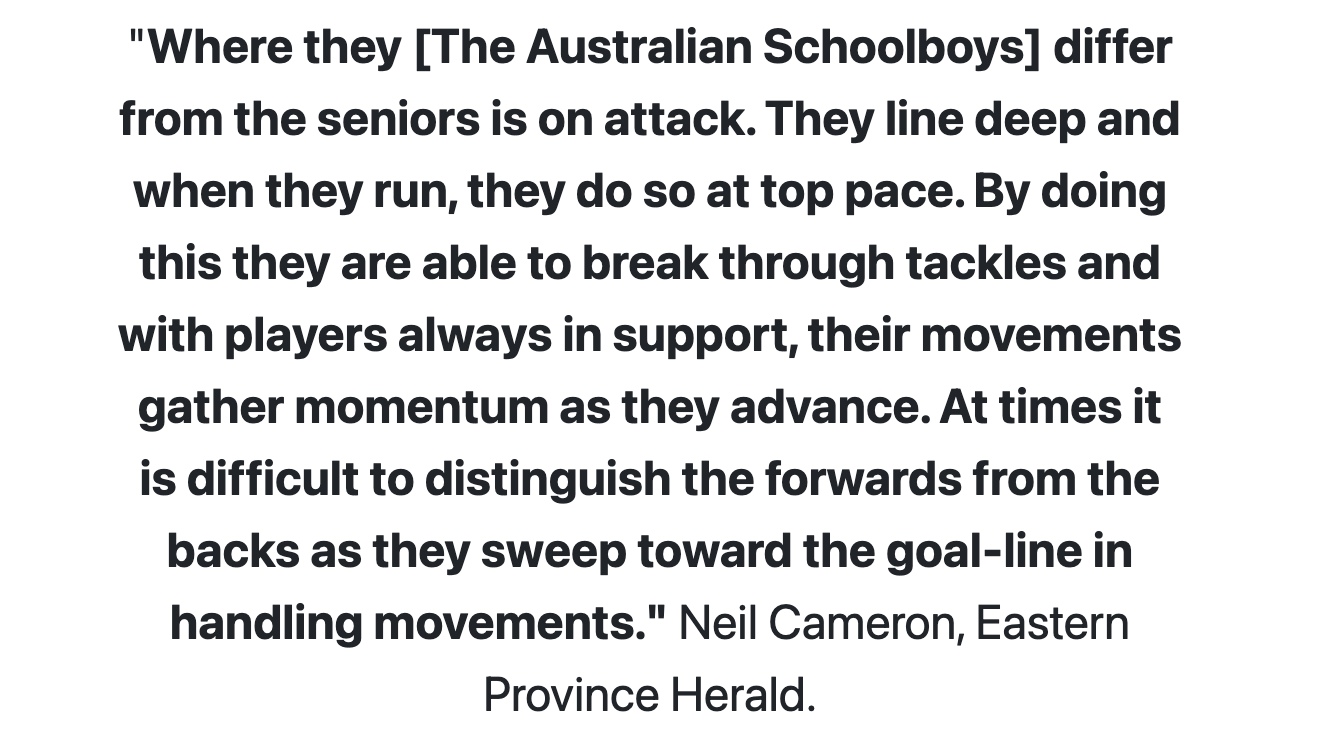
Despite this, team spirit and self-belief were still high when the team moved on to Kimberley to play Griqua Schoolboys. The game was played at de Beers Stadium before another large crowd on a fine, warm day with a strong wind blowing. In the first minute of the game, Griqua was awarded a penalty, which was successful, and they went to a lead of 3—nil.
After only 8 minutes of play, Australia won a scrum, but pressure from the opposing scrum half caused an untidy ball. The fast breaking Griqua flanker swooped on the loose ball, fed his winger who streaked down the field to score. This was converted and they now lead 8 points to nil.
With their backs to the wall the boys rallied. With some brilliant attacking play collectively and individually, the Australians surged down the field eventuating in a try to Russell Fairfax. It was so good that it brought the crowd to their feet, and the boys were awarded a standing ovation. The try was converted by Jack.
Half time saw the score reading Griqua 8, Australia 5.
Both teams launched an attack when they returned to the field, but good defence prevented any change of score until the 7th minute when an uncommon misunderstanding by the Australian backs in defence saw a good break by the Griqua centre, who outpaced the cover to score 15 metres out from the post. The conversion saw another 5 points to them and the score read 13-5.
In the 11th minute of the second half, the opposition won good scrum ball and took it to the blind. Our flankers covered in defence and dislodged the ball. However one of their flankers swooped on this loose ball and scooted 30 metres to score in the corner. There was no conversion this time but the score climbed to 16-5.
In the 20th minute, and from a scrum on the Australian 10m line, a quick ball was delivered to the backs. A good kick from our centre-three– quarter to the winger saw the ball taken cleanly and the winger off down the field. The cover caught him just before the line but from a fierce ruck with close passing, we saw hooker Mooney go over beside the post. This was converted by Jack, and the score moved to a more respectable 16-10.
The game now surged from end to end with neither side prepared to give way. Great attack and magnificent defence cut down what seemed would be certain trys. Something had to give and in the 27th minute, 3 minutes before full time with both teams exhausted, a good interchange of passing between the Griqua backs and forward saw them surge down the field to score a converted try and make the final score Griqua 19, Australia10.
The boys were naturally disappointed. It was the first loss of the tour. They had nothing to be ashamed off. It had been a brilliant game between two willing teams but a number of factors had conspired to bring the loss about. No one was critical of the Griqua team. It was just team morale had been so high the loss was a bit of a let-down.
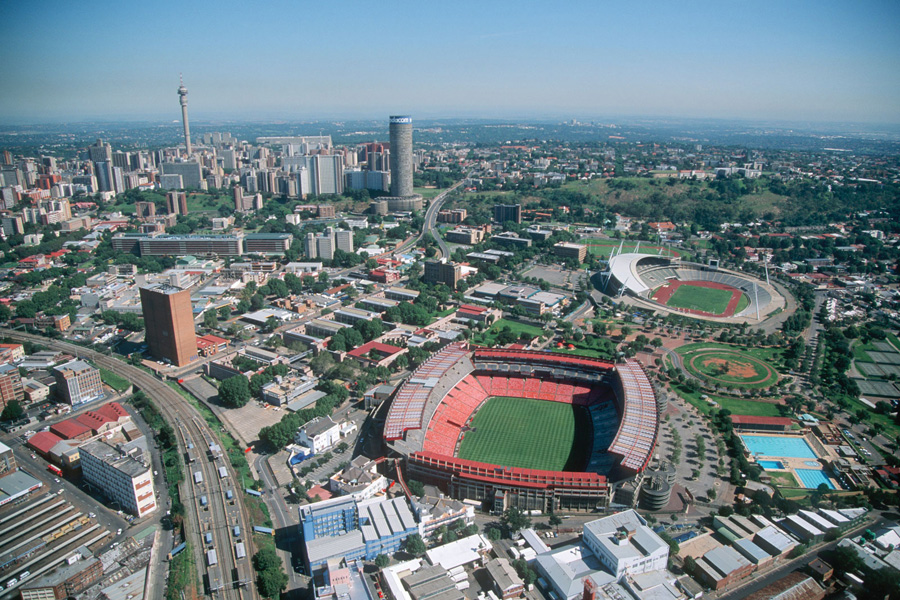
The Australian Schoolboys played Transvaal Schools at the great Ellis Park in Johannesburg with 15,000 spectators
It was then off to the last game of the tour, versus Transvaal Schools, at the famous Ellis Park in Johannesburg on Saturday, September 6.
An unbelievable 15,000 knowledgeable and noisy crowd were in the Stadium to watch this Wallabitjes Team that had made such an impact wherever they played. It had been a very demanding tour. The boys faced strong opponents in every game and received rave reviews everywhere they went, especially on the way they played the game.
They now faced their last opponents – Transvaal Schoolboys. All teams that played under this label “Transvaal” were noted for their prowess in the game of Rugby, so the boys were expecting a very hard game. At the same time, team spirit was high, and the Australians were determined to finish the tour on a high.
Once again, they started with a burst. After only 4 minutes from a well-set scrum, the ball was spun out along the back line, passed back inside after a good break and touched down under the posts by centre Jack. Despite the easiest of opportunities, the conversion was missed, but the boys lead 3-0.
This lifted their efforts even further. The backs were on fire. Great passing. Great backing up and handling saw them run in another 4 tries, 3 to Jack and 1 to Rowlands, Jack converting 4 and kicking a penalty goal to make the half-time score Australia 26—Transvaal Nil.
The second half saw the same energy expended, but this time, the forwards decided they would join in the try-fest. Three more tries were scored, a second to Rowlands and a try each to Finnane and Giles, Fairfax a conversion, to make the score at full-time 37 –Nil. It was a fitting result of a wonderful tour, and the appreciative crowd acted accordingly.
The Australian Team scored a total of 30 tries in the 7 games, converted 18 of these and kicked four penalties.
Their South African opponents scored a total of only 7 tries, converted 5 and potted 5 penalty kicks.
The total points scored by the boys were 135, with 49 against.
The first Australian Schoolboys team played seven games on tour, winning five, with one loss and one draw, scoring 135 points for, with 49 against. Impressively, the “Wallabitjes”, as the local press coined them, scored 30 tries in the 7 games, with their South African opponents scoring only 7 tries.
And so it came to an end. It had been the first overseas tour by a representative schoolboys rugby team from Australia. It had been successful beyond anyone’s dreams. The boys had been marvellous ambassadors for their country, as many items of correspondence sent post-tour to both Bill Toft and Gerry Burns can attest. They had been led by these two men with distinction. The boys spoke in glowing terms of the way they were led and speak with awe to this day about their influence and care for the team.
Yes, it had been successful in its own right, but it had a wider and longer influence than just that. As mentioned in the introduction to this section, in 1969, there was no official Schools Rugby Union, and the planning and organisation for the tour showed a need for an organisation that could occupy this role.
The tour was done for the following reasons:
- The tour provided a momentum and impetus to form a Schools’ Union. Delegates from Australia and South Africa to the International Rugby Board meeting in 1968 had come back home impressed with what was happening in this area of a Union of Schools ’ Rugby in the home countries.
- the fact that Rugby was able to send a representative team on an international tour, gave a boost to the code at schools level, and
- The experience gained and lessons learnt in planning and organising the trip were to prove invaluable in the planning and organization of future tours. Many of the personnel involved were future leaders in schools’ union matters.
The planners of 1969 showed what could be done and these men formed the nucleus in a short time after when the New South Wales Schools’ Union was formed and who with the Queensland Union which had been formed a short time earlier, agitated for a national body which was formed with Australian Rugby Unions encouragement and support in 1972.
The ARFSU is rightly proud to accept this tour to South Africa on its honour board as one of the many successes it has had over the years.
Of the players themselves, many went on to bigger and better things and became noted for their achievements in representative Rugby among this group were the mercurial Russell Fairfax, Greg Cornelsen, Steve Finnane and Jim Hindmarsh, and who, despite the many tours they would have undertaken as rep players still rate this tour highly. Others became the backbone of the various clubs they played for and in some cases were unlucky not to go further.
In the main they achieved success in their careers and in family life but all speak to this day about the sense of achievement and maturity they gained from being a member of The Australian Schoolboys 1969 Tour to South Africa.
Australian Schoolboys Tour of South Africa 1969
| Sun, 17 Aug | Landed in Johannesburg | ||
| Wed, 20 Aug | Northern Transvaal Schools | Loftus Versfeld Oval, Pretoria | Won 11- 8 |
| Sat, 23 Aug | Western Province Schools | Newlands, Capetown | Won 10 – 3 |
| Thu, 28 Aug | Eastern Province Schools | Boot Erasmus Stadium, Port Elizabeth | Won 29 – 5 |
| Sun, 31 Aug | Border East Schoolboys | Basil Kenyon Stadium, East London | Won 27 – 3 |
| Tue, 2 Sep | Orange Free State Schoolboys | Free State Stadium, Bloemfontein | Drew 11 – 11 |
| Fri, 5 Sep | Griqua Schoolboys | De Beers Stadium, Kimberley | Lost 10 – 19 |
| Mon, 8 Sep | Transvaal Schools | Ellis Park, Johannesburg | Won 37 – 0 |
| Mon, 8 Sep | Team departs |
END
5,339 words
By Jim Lucey
Author’s Notes: As the author of this chapter in the History of the ASRU, I would like to acknowledge the use of information provided by the following and thank them for making my task so much simpler:
- Brother Gerry Burns, Manager of this Tour.
- The Late Mr. Bill Toft—Coach of this Tour, who kept some detailed notes and match programs.
- Mr Steve Finnane —-Who sets the scene and tone of the Tour in a chapter headed “Innocents Abroad“ in his book —- “The Game They Play in Heaven “
- Thanks to Greg Cornelson for the newspaper clipping

1969 TOUR TO SOUTH AFRICA
TEAM LIST
| Peter Robinson | Captain – Epping Boys’ High |
| Richard Allen | Trinity Grammar School |
| Robert Armstrong | Epping Boys’ High |
| John Babister | Sydney Grammar School |
| Peter Bull | Newington College |
| Timothy Clemenson | Newington College |
| Greg Cornelsen | The Armidale School |
| Alan Coutts | Epping Boys’ High |
| Russell Fairfax | Matraville High |
| Steven Finnane | Vaucluse Boys’ High |
| Peter Fleming | Marist College, Ashgrove |
| Robert Fosberg | Epping Boys’ High |
| David Giles | Hurlstone Agricultural High |
| Brian Hayward | The Armidale School |
| Jim Hindmarsh | Scots College |
| Charlie Horder | Shore School |
| Malcolm Jack | Balgowlah Boys ‘ High |
| Graham McPhail | Brisbane State High School |
| Sean Mooney | Epping Boys’ High |
| Alistair Robinson | Hurlstone Agricultural High |
| Timothy Rowlands | Scots College |
| Lou Slaughter | Scots College |
| Andrew Stathopoulos | Cranbrook School |
| Ronald Taylor | Barker College |
| Timothy Wardle | St. Ignatius College, Riverview |
| Manager: Br. Gerry Burn | Marist Brothers College, Cairns |
| Assistant Manager: Coach | Mr Bill Toft |
Jim Lucey
- President of Australian Schools Rugby Union 1982-1992.
- Coach of Queensland Schoolboy‘s team 1973, 74, 75.
- Assistant coach of Australian Schoolboy‘s Team 1977/78 UK Tour.
- Member of the Q.R.U management committee 1972-1982.
- Life member of the Q.R.U.
- 2008: In Queen’s birthday honours, the Order of Australia Medal was awarded for service to education through leadership, teaching, and rugby coaching roles.
- Club Legend status for Teachers North Brisbane Rugby Club, 2019
- Member of Teachers Premiership B Grade side 1960.
- Member of inaugural 1st Grade side in 1961.
- 1st Grade 1961-1968, 1970-1971. Teachers
- 1st Grade coach 1969. Teachers
- 1st Grade captain 1965-1968. Teachers
- Toured New Zealand with 1963 Queensland side. Represented Queensland on a number of occasions 1963-1965. Captained a Brisbane XV.
- Member of Norths Rugby Club’s management committee throughout the period as a player and coach.
- Life member of the North Brisbane Rugby Union Club.
- Very successful schoolboy coach, 1st XV coach at Brisbane State High School from late 60’s until the end of 1970’s. Secured a number of G.P.S Premierships.
NOTE TO READERS – WE WANT TO HEAR FROM YOU
All efforts have been made to present a detailed and accurate record of players and events, remembering that this tour was 55 years ago. However, please advise us of any corrections or additions that you feel should be made to the article. Any photographs of the tour or clippings would be welcome.
Anyone who has the ‘TBC’ dates and the name of the oval in East London, please email the editor at: [email protected]
LAST WORD
